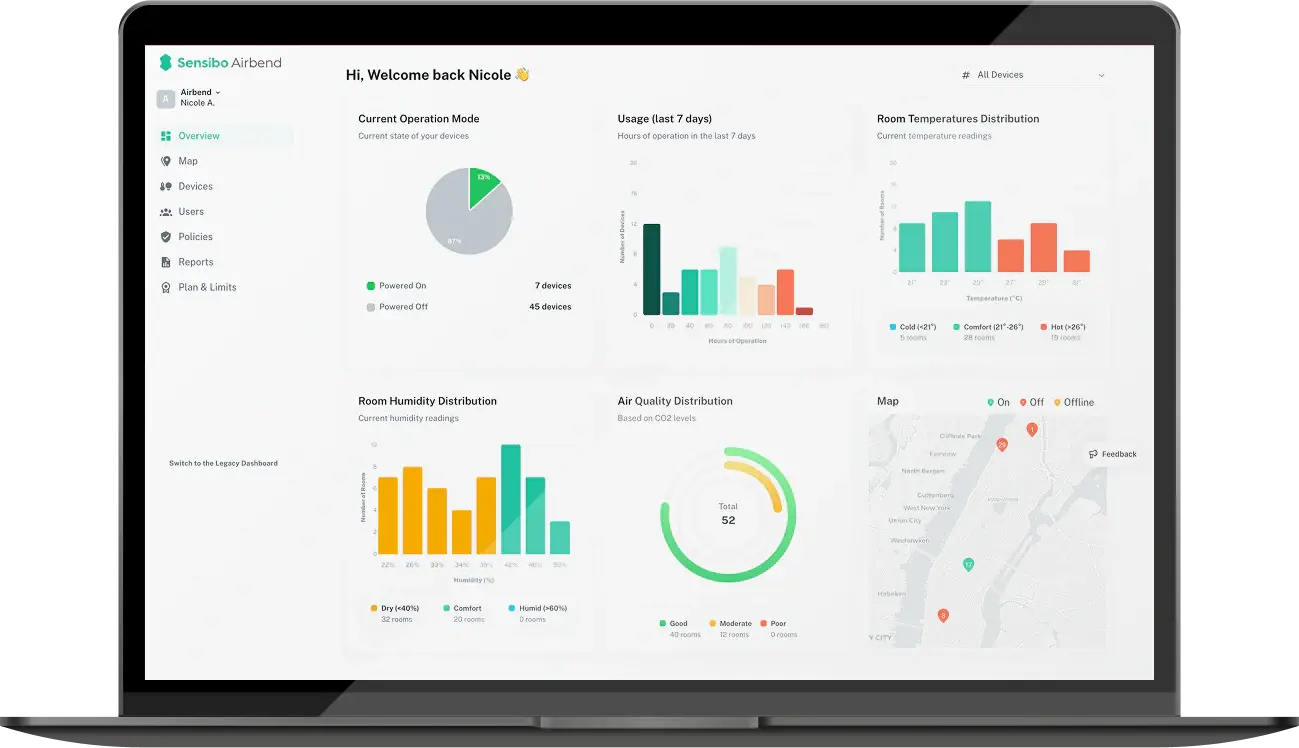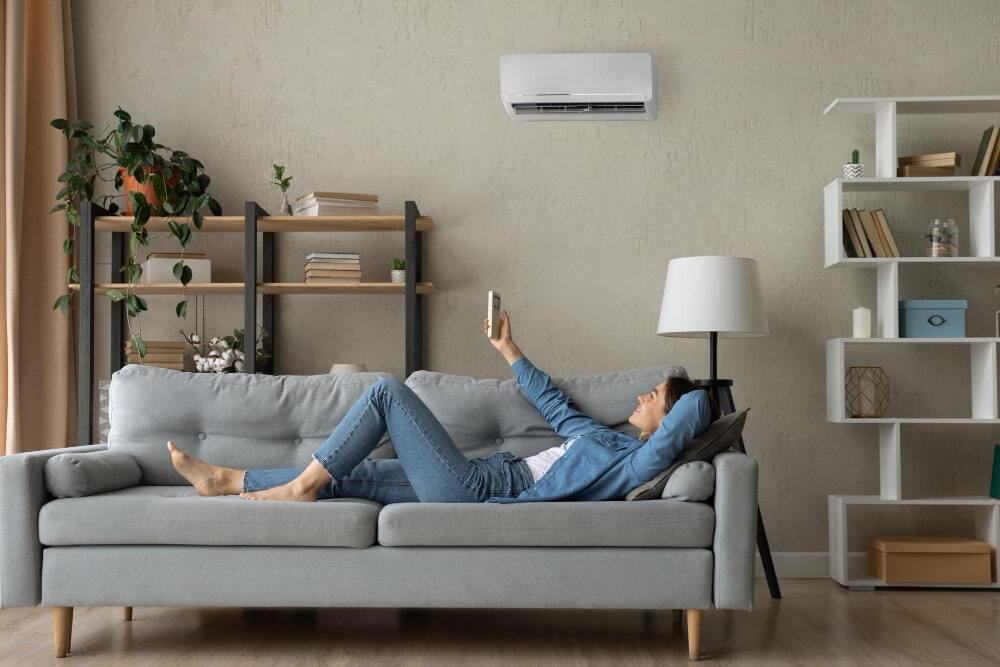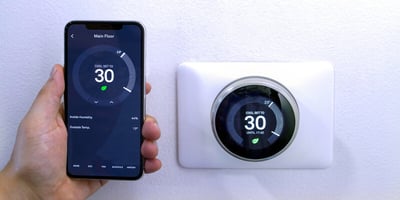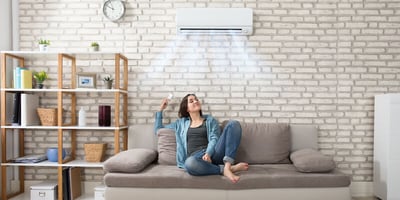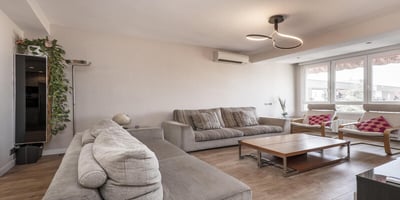Different Types of Air Conditioners: Choose the Best AC for Your Comfort
Key Takeaways
- Central and ductless options both cool entire homes but take completely different approaches to installation and room control
- Window and portable models solve immediate cooling needs without major construction projects or landlord approval battles
- Smart features slash energy bills through automated operation while adding convenience you'll actually use daily
- Correct sizing trumps everything else — get this wrong and no amount of fancy features will save you from discomfort and waste
- Local weather patterns and your house design determine which system will thrive versus merely survive in your specific situation
Heat waves don't mess around. When temperatures soar past comfortable levels, the difference between a well-chosen cooling system and a poor match becomes painfully obvious. Today's AC market offers everything from budget window units to high-tech smart systems. Each option serves different needs, spaces, and wallets. Finding your perfect match requires cutting through sales pitches to understand what actually works.
-
How Air Conditioning Actually Works
-
Complete Breakdown of Types of Air Conditioners
-
Strategic Air Conditioner Selection Guide
-
Making Your Final Decision
-
FAQ
How Air Conditioning Actually Works
Here's what really happens when you flip that switch. Your AC doesn't create cold air—it's actually a heat thief. The system grabs heat from inside your house and dumps it outside. Four key parts make this magic happen: the compressor squeezes refrigerant into high-pressure gas, the condenser coil releases captured heat outdoors, an expansion valve drops pressure dramatically, and the evaporator coil absorbs indoor heat like a sponge.
BTU ratings tell you how much heat gets removed each hour. More BTUs equal more cooling muscle. SEER and EER numbers reveal efficiency—think of them like your car's MPG rating. Higher efficiency scores mean smaller electric bills month after month.
Recent breakthroughs brought us variable-speed compressors that dial power up or down instead of just hammering at full blast. These innovations run whisper-quiet compared to older models that sound like freight trains. Environmental improvements matter too. New refrigerants like R-32 do less damage to the atmosphere while delivering better performance.
Modern systems tackle air quality seriously. Multi-stage filters capture everything from dust bunnies to pollen while some models even neutralize bacteria and odors. Understanding these fundamentals helps you evaluate marketing claims and focus on features that genuinely improve your daily comfort rather than just sounding impressive in brochures.
Complete Breakdown of Types of Air Conditioners
Central Air Conditioning Systems
Central air rules American homes because it tackles everything at once through invisible ductwork. Two main flavors exist: split-systems that separate indoor and outdoor components, and packaged units that cram everything into one outdoor box.
Split-systems banish the loudest parts outside while keeping quiet air handlers indoors, typically nestled near your furnace in a utility room or basement. Packaged units consolidate all components into a single outdoor cabinet—perfect for homes lacking indoor equipment space or preferring simplified installations.
 Solid advantages:
Solid advantages:
- Uniform temperatures throughout every connected room
- Virtually silent indoor operation with outdoor compressor placement
- Significant home value increases compared to room units
- Whole-house air filtration and humidity control
- Natural integration with smart thermostats and home automation platforms
Real drawbacks:
- Substantial upfront investment, especially when adding new ductwork
- Energy losses through poorly sealed or inadequately insulated ducts
- Professional maintenance requirements to maintain peak efficiency
- Limited ability to customize temperatures for individual preferences
Central systems excel in larger homes with existing ductwork, new construction projects, and households preferring consistent comfort throughout all living spaces. Properly designed installations rank among the best air conditioners for comprehensive home climate control.
Ductless Mini-Split Systems
 Mini-splits revolutionize cooling by connecting one efficient outdoor unit to multiple indoor air handlers, delivering precise zone control without destroying walls for ductwork installation. Each indoor head operates independently, allowing customized temperatures for different rooms while avoiding energy waste in unused spaces.
Mini-splits revolutionize cooling by connecting one efficient outdoor unit to multiple indoor air handlers, delivering precise zone control without destroying walls for ductwork installation. Each indoor head operates independently, allowing customized temperatures for different rooms while avoiding energy waste in unused spaces.
Efficiency advantages blow away most other types of ac because ductwork losses disappear entirely—no more paying to cool your attic or crawl space. Variable-speed inverter technology continuously adjusts compressor output to match actual cooling demands rather than cycling on and off like old-school systems.
Installation requires only a modest wall penetration to route refrigerant lines between units. Indoor heads mount discretely near ceilings or rest on floors depending on room layout and aesthetic preferences. Most models provide efficient heating through heat pump operation during cooler months.
Major benefits:
- Superior efficiency compared to central systems in most applications
- Individual room temperature control and independent scheduling
- Minimal installation disruption to existing homes and daily routines
- Excellent heating and cooling performance in moderate climates
- Much quieter operation than window units or older central systems
Considerations:
- Higher total costs when covering entire homes with multiple indoor units
- Wall-mounted units may clash with certain decorating styles or room layouts
- Professional installation and service required for refrigerant system work
- Multiple maintenance points as indoor unit count increases
Mini-splits shine in home additions, older houses lacking existing ductwork, multi-generational households with varying comfort preferences, and energy-conscious homeowners prioritizing efficiency over initial costs.
Window Air Conditioners
 Window units remain America's cooling workhorses by cramming complete air conditioning into compact packages designed for standard window openings. These self-contained systems deliver immediate relief without contractors, permits, or financing applications.
Window units remain America's cooling workhorses by cramming complete air conditioning into compact packages designed for standard window openings. These self-contained systems deliver immediate relief without contractors, permits, or financing applications.
Today's window ACs have evolved far beyond basic on/off operation. Inverter technology enables variable-speed operation for improved efficiency and comfort. Smart connectivity allows smartphone control and scheduling. Advanced features include sleep modes that gradually adjust temperatures, programmable timers, and even air quality monitoring.
Size options span from compact 5,000 BTU units perfect for small bedrooms to powerful 25,000 BTU models capable of cooling large living areas or small apartments.
Installation advantages:
- DIY-friendly setup requiring only basic tools and common sense
- Zero permanent modifications to living spaces or building structures
- Simple seasonal removal and storage when cooling seasons end
- Immediate cooling gratification without scheduling service appointments
Performance strengths:
- Budget-friendly cooling for individual rooms and targeted applications
- Lower initial investment compared to permanent whole-house systems
- Rental property compatibility without installation restriction concerns
- Effective supplemental cooling for areas poorly served by central systems
Window units dominate apartments, dormitories, smaller homes, guest rooms, workshops, and any situation where permanent installation costs exceed benefits or isn't permitted by landlords or housing regulations.
Portable Air Conditioners
 Portable units deliver ultimate flexibility by rolling on built-in wheels to wherever cooling is needed most. These standalone systems require only electrical power and window access for hot air exhaust—no mounting, drilling, or permanent installation.
Portable units deliver ultimate flexibility by rolling on built-in wheels to wherever cooling is needed most. These standalone systems require only electrical power and window access for hot air exhaust—no mounting, drilling, or permanent installation.
Engineering comes in two distinct approaches: single-hose designs that exhaust hot air while drawing replacement air from the conditioned room, and dual-hose models that separate intake and exhaust air streams for improved efficiency. Dual-hose configurations generally outperform single-hose designs but command higher prices.
Flexibility highlights:
- Effortless room-to-room relocation without reinstalling hardware or calling technicians
- No permanent building modifications or window hardware requirements
- Ideal solutions for temporary cooling needs, seasonal usage, or frequent relocations
- Convenient off-season storage in closets, basements, or garages
Performance realities:
- Generally less efficient than equivalent BTU window units due to design constraints
- Floor space requirements and exhaust hose routing considerations
- Higher noise levels during operation due to indoor compressor placement
- Cooling capacity limitations for larger spaces compared to permanent installations
Portable systems excel for renters facing installation restrictions, temporary living arrangements, server rooms requiring spot cooling, workshops needing seasonal comfort, and anywhere flexible cooling placement provides advantages over fixed installations.
Smart Air Conditioners
 Smart technology transforms traditional cooling into connected home systems through Wi-Fi integration, smartphone applications, and intelligent automation features. Options include purpose-built smart units or conventional systems enhanced with aftermarket smart controllers.
Smart technology transforms traditional cooling into connected home systems through Wi-Fi integration, smartphone applications, and intelligent automation features. Options include purpose-built smart units or conventional systems enhanced with aftermarket smart controllers.
Standard smart features encompass remote temperature adjustment, automatic scheduling based on occupancy patterns, geofencing that responds to smartphone location, comprehensive energy monitoring with usage reports, and voice control integration with Alexa, Google Assistant, and Siri platforms.
Advanced systems incorporate machine learning algorithms that study household patterns and automatically optimize settings for comfort and efficiency. Some models integrate with utility demand response programs, allowing electric companies to slightly adjust settings during peak demand periods in exchange for bill credits.
Technology advantages:
- Complete control from anywhere with internet connectivity
- Automated operation based on occupancy schedules and weather forecasts
- Detailed energy usage tracking with actionable optimization recommendations
- Seamless integration with existing smart home ecosystems and security systems
Investment analysis:
- Premium pricing compared to conventional models, typically 10-20% higher
- Energy savings often justify extra costs within 2-4 years through optimized operation
- Smart controller retrofits provide similar benefits at lower upfront investment
- Enhanced home resale value through modern technology integration
Smart systems particularly appeal to technology enthusiasts, frequent travelers who value remote control, busy families with complex schedules, and environmentally conscious homeowners prioritizing energy efficiency and utility cost reduction.
Specialty Cooling Systems
 Floor-Mounted Mini-Splits: Floor-mounted configurations position cooling equipment at ground level, improving accessibility for maintenance while distributing conditioned air effectively at occupant height. These work well when wall mounting isn't practical due to structural limitations or accessibility requirements.
Floor-Mounted Mini-Splits: Floor-mounted configurations position cooling equipment at ground level, improving accessibility for maintenance while distributing conditioned air effectively at occupant height. These work well when wall mounting isn't practical due to structural limitations or accessibility requirements.
Geothermal Heat Pump Systems: Geothermal technology harnesses stable underground temperatures for exceptionally efficient year-round climate control. Ground loop installations require significant upfront investment but deliver decades of low operating costs and minimal maintenance requirements.
Hybrid Dual-Fuel Systems: Hybrid configurations combine electric heat pumps with gas furnaces, automatically switching between energy sources based on outdoor conditions and real-time utility rates. Advanced control systems optimize fuel selection for lowest operating costs while maintaining consistent indoor comfort.
Strategic Air Conditioner Selection Guide
Sizing Fundamentals
Accurate sizing affects every aspect of AC performance—comfort levels, energy efficiency, equipment longevity, and monthly operating costs. Undersized units struggle during peak conditions while oversized systems short-cycle, wasting energy and failing to control humidity effectively.
Practical sizing calculations:
Total room area × BTU factor = Required cooling capacity
- Small bedrooms and offices: 20-30 BTU per square foot
- Living rooms and common areas: 20 BTU per square foot
- Large open spaces and great rooms: 15-20 BTU per square foot
Critical adjustment factors:
- Rooms with extensive sun exposure: increase base calculation by 10%
- Heavily shaded or north-facing spaces: reduce base calculation by 10%
- Each additional occupant beyond two people: add 600 BTU
- Kitchen applications with cooking equipment: add 4,000 BTU
- Rooms with high ceilings or poor insulation: increase by 15-25%
Professional load calculations using ACCA Manual J methodology provide most accurate sizing for central systems, incorporating complex variables like building orientation, local climate data, window efficiency, insulation quality, and air infiltration rates.
 Efficiency Ratings and Long-Term Value
Efficiency Ratings and Long-Term Value
SEER ratings directly correlate with operating costs, making efficiency analysis crucial for long-term value. Current federal minimum standards require 14 SEER for central systems, but high-efficiency models reach 26 SEER with proportional energy savings.
Performance categories:
- Standard efficiency models: 14-16 SEER (meets basic requirements)
- High-efficiency units: 17-21 SEER (substantial bill reductions)
- Ultra-high efficiency systems: 22+ SEER (maximum energy savings)
ENERGY STAR certification indicates models exceeding federal minimums by 15% or more, often qualifying for utility rebates, manufacturer incentives, and federal tax credits. Variable-speed technology enhances efficiency further by precisely matching output to cooling demands.
Comprehensive Budget Planning
Initial investment by system type:
- Window units: $150-$800 (immediate DIY installation)
- Portable systems: $300-$1,500 (plug-and-play operation)
- Ductless mini-splits: $1,500-$8,000 per zone (professional installation required)
- Central air systems: $3,000-$15,000 complete (major installation project)
- Geothermal installations: $15,000-$35,000 (long-term investment strategy)
Operating cost variables:
- Local electricity rates including time-of-use pricing structures
- Actual efficiency performance under your specific usage patterns
- Professional maintenance frequencies and associated service costs
- Expected equipment lifespan before major repairs or replacement become necessary
Available financing assistance:
- Manufacturer zero-interest promotions during off-peak sales periods
- Utility company rebate programs for high-efficiency equipment purchases
- Federal and state tax credits for qualifying ENERGY STAR systems
- Home improvement loan programs with competitive interest rates
Climate and Home Evaluation
Regional climate patterns determine which types of air conditioning system perform optimally versus merely adequately. Humid coastal areas require strong dehumidification capabilities while arid desert regions might allow alternative cooling technologies.
Comprehensive home assessment:
- Current insulation levels in walls, attics, and foundations
- Window efficiency ratings and solar heat gain characteristics
- Existing electrical service capacity for additional equipment loads
- Available installation space for both indoor and outdoor components
- Homeowner association restrictions and neighborhood aesthetic requirements
Older homes frequently require electrical service upgrades to handle modern AC equipment safely. House layout significantly impacts air distribution effectiveness. Open floor plans allow natural air circulation while compartmentalized designs may require additional airflow considerations.
Making Your Final Decision
Successful air conditioner selection requires balancing performance requirements, budget constraints, installation realities, and personal preferences. Begin by clearly identifying your primary objective: comprehensive whole-house comfort, targeted room cooling, or supplemental capacity for existing inadequate systems.
Systematic decision process:
- Accurately assess cooling requirements: Calculate load requirements for all target spaces using proper methodology
- Establish realistic budget parameters: Include equipment costs, installation expenses, and long-term operating projections
- Evaluate installation feasibility: Verify electrical capacity, structural requirements, and permit necessities
- Compare efficiency options: Balance higher initial costs against projected energy savings over equipment lifespan
- Research qualified contractors: Obtain multiple detailed quotes and verify licensing, insurance, and customer references
Professional consultation provides significant value for central system installations, complex retrofit projects, or homes with unusual architectural features. Experienced contractors perform accurate load calculations, evaluate existing infrastructure conditions, and recommend optimal solutions tailored to your specific circumstances.
FAQ
Which type of air conditioner is most energy efficient?
Variable-speed ductless mini-splits typically achieve highest efficiency ratings, frequently exceeding 20 SEER performance levels. However, properly sized central systems with premium efficiency ratings can deliver comparable performance for whole-home applications. Your most efficient choice depends on accurate sizing, professional installation quality, and how you actually use the system throughout cooling seasons.
Can I install a window or portable AC myself?
Most window air conditioners install easily with basic hand tools and assistance for safe lifting and positioning. Portable models require only electrical connection and exhaust hose placement through window openings. Larger window units may need additional support brackets and electrical circuit verification. Professional installation guarantees proper mounting, effective weatherproofing, and electrical safety compliance.
How do I calculate the right BTU size for my room?
Multiply room square footage by 20 BTUs for baseline sizing, then adjust for specific conditions. A typical 300 square foot bedroom requires approximately 6,000 BTUs (300 × 20). Increase capacity for sunny exposure, high ceilings, kitchen applications, or additional occupants. Decrease for heavily shaded areas or superior insulation performance.
What's the difference between smart ACs and adding a smart controller?
Smart air conditioners include integrated Wi-Fi connectivity and manufacturer-designed applications with features optimized for that specific model's capabilities. Smart controllers retrofit existing conventional units with similar functionality at lower investment levels but may have compatibility limitations or reduced feature sets. Built-in smart systems typically offer superior integration and advanced capabilities like adaptive learning algorithms.
How long do different types of AC systems typically last?
Central air conditioning systems typically operate effectively for 15-20 years with proper maintenance and reasonable usage patterns. Ductless mini-split systems often reach 15-25 years due to gentler operating cycles and reduced mechanical stress. Window and portable units generally last 8-12 years depending on usage intensity and maintenance quality. Geothermal systems frequently exceed 25 years for indoor components and 50+ years for underground loop systems.
Are smart air conditioners worth the extra cost?
Smart functionality typically adds 10-20% to initial purchase prices but can reduce energy consumption by 15-25% through optimized automatic operation and scheduling. Additional benefits include enhanced convenience, improved comfort control precision, and potential utility bill reductions through demand response programs. Investment payback usually occurs within 2-5 years based on usage patterns and local electricity costs, making smart features worthwhile for efficiency-focused households and technology enthusiasts.




























